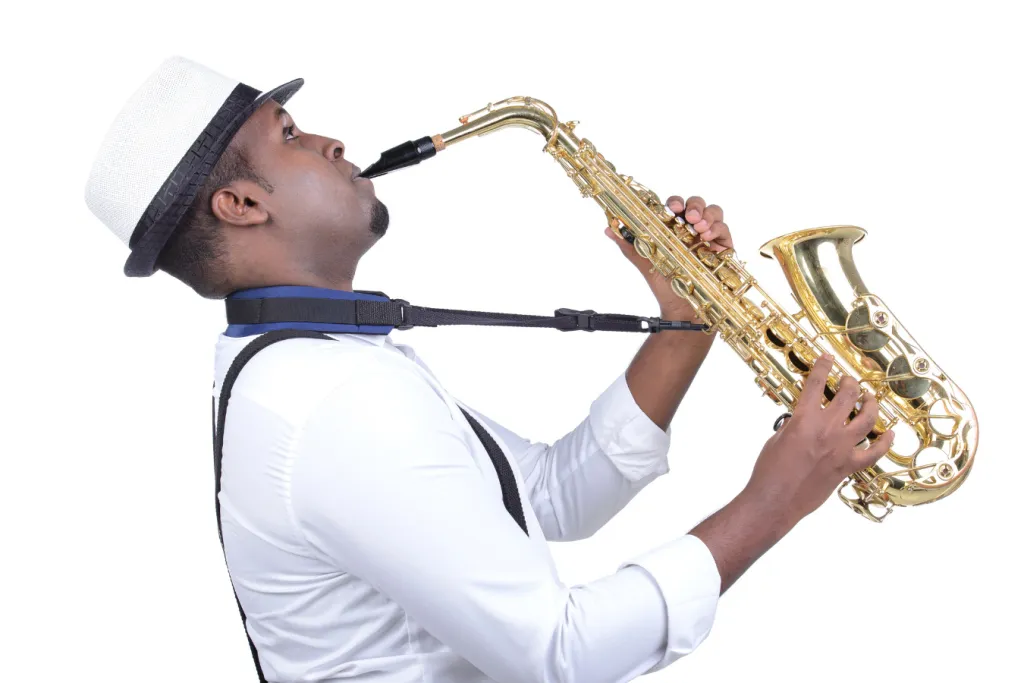Overblowing is a technique saxophonists use to produce higher pitches by manipulating their airflow and embouchure. It occurs when a player forces more air through the instrument, causing the reed to vibrate at a higher frequency. Controlling overblowing requires a combination of proper breath support, embouchure control, and understanding of the saxophone’s harmonic series.
Saxophonists can harness overblowing to access the instrument’s upper register and create unique effects like split tones. However, unintentional overblowing can lead to squeaks and unwanted pitch changes, making it crucial for players to develop precise control over their air stream and lip pressure.
Mastering overblowing is an essential skill for saxophonists of all levels. It allows players to expand their range, improve tone quality, and explore advanced techniques. By understanding the physics behind overblowing and practicing targeted exercises, saxophonists can gain better control over this fundamental aspect of their instrument.
Understanding Overblowing
Overblowing is a crucial technique for saxophone players to master. It involves manipulating airflow and embouchure to produce higher pitches and overtones. Proper control of overblowing allows saxophonists to expand their range and create unique tonal effects.
The Basics of Overblowing on Saxophone
Overblowing on saxophone refers to the technique of changing the airstream direction or force to produce a higher pitch without altering fingerings. This method disturbs the fundamental note, allowing an overtone to dominate. Saxophonists use overblowing to access higher registers and create multiphonics.
To overblow effectively:
- Increase air pressure
- Adjust embouchure tension
- Focus the airstream precisely
Controlling these elements enables players to smoothly transition between registers and maintain consistent tone quality. Overblowing is essential for playing in the altissimo range, which extends beyond the saxophone’s standard range.
Common Causes of Overblowing
Unintentional overblowing can lead to squeaks, split tones, or loss of control. Several factors contribute to this issue:
- Excessive air pressure
- Improper embouchure formation
- Incorrect reed strength or mouthpiece setup
Inconsistent air support often results in overblowing, especially during dynamic changes. Beginners may struggle with embouchure control, causing notes to jump to higher partials unexpectedly.
Equipment issues can exacerbate overblowing problems. A too-soft reed or overly open mouthpiece may make it difficult to maintain proper resistance. Regular instrument maintenance and appropriate equipment choices help prevent unwanted overblowing.
Techniques for Controlling Overblowing
Mastering overblowing control requires focusing on three key areas: breath support, embouchure adjustments, and proper fingering and posture. These techniques work together to give saxophonists precise control over their instrument’s sound production.
Breath Support and Diaphragm Use
Proper breath support is crucial for controlling overblowing on the saxophone. Players should focus on using their diaphragm to create a steady, controlled airstream. This involves taking deep breaths from the lower abdomen rather than shallow breaths from the chest.
Saxophonists can practice diaphragmatic breathing exercises to improve their control. One effective method is to lie on your back with a book on your stomach, breathing so that the book rises and falls with each breath.
When playing, maintain consistent air pressure. Avoid sudden increases in air volume, which can lead to unintended overblowing. Instead, focus on a smooth, continuous airflow.
Embouchure Adjustments
The embouchure plays a critical role in preventing unwanted overblowing. Saxophonists should aim for a firm yet flexible embouchure that allows for precise control of the reed’s vibrations.
To adjust the embouchure:
- Tighten or loosen the lips slightly
- Alter the amount of mouthpiece taken into the mouth
- Change the angle at which the mouthpiece enters the mouth
Experiment with these adjustments to find the sweet spot that allows for clear tone production without accidental overblowing. Regular practice of long tones can help develop embouchure strength and control.
Fingering and Posture Considerations
Proper fingering technique and posture contribute significantly to overblowing control. Ensure that fingers are placed correctly on the keys, covering them fully to prevent air leaks.
Maintain a relaxed, upright posture while playing. This allows for optimal breath support and reduces tension in the upper body, which can affect air control.
Practice fingering exercises to improve dexterity and accuracy. Focus on smooth transitions between notes, especially in the upper register where overblowing is more likely to occur.
Split tones and harmonics exercises can help develop better control over the instrument’s overtones, leading to improved overall control of overblowing techniques.
Practice and Troubleshooting
Controlling overblowing requires focused practice and careful evaluation of your technique. By implementing targeted exercises and analyzing your tone, you can develop better control and improve your overall saxophone playing.
Targeted Exercises for Overblowing Control
Start with long tones to build embouchure strength and control. Practice sustaining notes for 10-15 seconds, focusing on maintaining a steady volume and pitch.
Experiment with dynamic control exercises. Play a single note, gradually increasing volume without changing pitch, then decreasing back to the starting volume. This helps develop awareness of air support and embouchure pressure.
Work on octave jumps, moving between low and middle register notes. Pay attention to the air stream and embouchure adjustments needed for clean transitions.
Practice slow scales, concentrating on even tone and consistent volume across all notes. This builds muscle memory for proper air support and embouchure control.
Evaluating Your Tone and Intonation
Record yourself playing various exercises and pieces. Listen critically for signs of overblowing, such as harsh or unwanted overtones.
Use a tuner to check intonation while playing long tones and scales. Overblowing often leads to sharp notes, especially in the upper register.
Play with others or along with recordings to develop a better sense of blend and appropriate volume levels. This helps prevent overblowing to hear yourself in ensemble settings.
Experiment with different reed strengths and mouthpiece combinations. Sometimes equipment adjustments can help mitigate overblowing tendencies.

